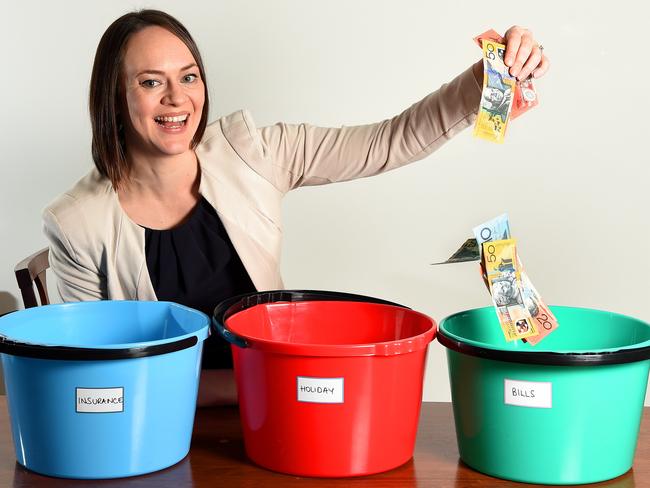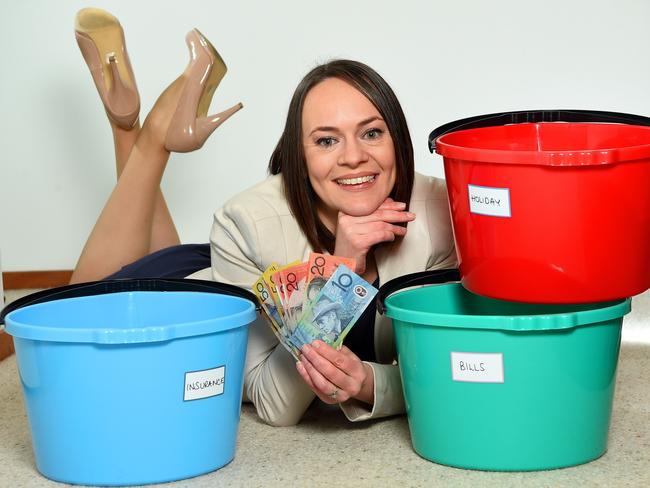How to build a household budget by using the bucket method
THE bucket method is a popular tool that financial planners use as a straightforward way to organise your budget. Just follow these steps.
THE end of the financial year is the perfect time to step back and have a look at how you have spent the last 12 months — literally.
Some close scrutiny will soon tell you whether you have overspent, underspent or are on track to reach your financial goals.
Then you can get cracking on building your budget bucket list for the next fiscal year.
The bucket method is a popular tool that financial planners use as a straightforward way to organise your budget. Just follow these steps.

1. Income test
Work out where your money is coming from, says financial planner Cath Sharples-Rushbrooke, manager at Advice Services Australia.
“This could include a variety of sources including salary/ wages from employment, small business profits, investments or even Centrelink benefits,” says Sharples-Rushbrooke.
Then sort out where it is going to.
When people spend more than they earn it can lead borrowing money to fund everyday living costs which is expensive and often unnecessary.
“Sometimes they are borrowing money for things they probably don’t really need,” she says. “At its worst, sometimes this borrowing can spiral out of control meaning that people don’t even have enough money for things they actually do need.”

2. Grab your buckets
Create three buckets of money to regulate your expenses and get you in the habit of putting money away every pay cycle, says Gavin Fernando of Prosperity Advisers.
The first is for expenses that are pay less frequently than monthly such as utilities, car registration and insurance.
“These expenses don’t come in regularly but they happen every year, like Christmas, you just have to budget for them,” he says.
The second is saving for discretionary expenses such as a holiday in 12 months time.
The third is for everyday living costs like groceries, entertainment, Foxtel etc
This way you regulate your costs and won’t need to resort to a credit card when larger expenses come in.
It also forces you to examine how much you are spending and may prompt you to look for ways to save.
“Look at big items and see how make a debt eg groceries a major component. Look in the fridge and see if you are throwing away consumables,” he says.
“Maybe it would be better to shop a little bit more often rather than cramming it all into one go or look at other suppliers for price and quality and weigh up if it’s better to do your grocery shopping elsewhere to save a few dollars.”
“For those who have a regular pay cycle, too much idle cash can burn a hole in your pocket,” says Fernando. “Make sure you have expenses covered for regular living but if you save a bit more than when the fridge blows or the car needs something you’ve got a safety net.”

3. Make a deal
Shop around for better deals on everything.
Take advantage of low interest rates, says Sharples-Rushbrooke: “Lenders are keen to retain business, so even calling your own bank to see if they can give you a better deal might yield instant savings.”
Examine your usage and cut where you can then start calling providers for better deals on insurance, gas, electricity, phone and data plans, groceries,
Pay down your most expensive debts first (usually credit cards)
Start saving whatever you can whether it is into a bank account, for investments, or adding to super.



